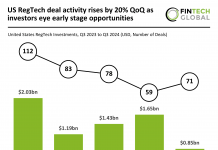RegTech firm Saifr recently took the opportunity to discuss what the SEC’s proposed predictive data analytics rule includes.
Artificial intelligence (AI), despite being a relatively nascent technology, is rapidly shaping a tech-driven future. This is particularly evident in how businesses, especially in the investment sector, are leveraging AI and predictive data analytics (PDA) to boost value and efficiency for investors.
However, the potential misuse of such powerful tools has caught the attention of regulatory bodies like the Securities and Exchange Commission (SEC), prompting them to propose new rules to help mitigate potential risks.
The SEC’s newly proposed regulations, aimed at broker-dealers and investment advisors, highlight the conflict of interest issues inherent in the use of PDA. The concern is that these technologies might encourage practices that benefit firms at the expense of their clients, such as prioritizing transactions that yield higher commissions.
While these issues are already addressed under existing securities laws, the SEC is wary that the sophistication and scale of PDA pose unique challenges that existing regulations may not adequately cover.
The SEC believes that merely disclosing potential conflicts might not be sufficient due to the complexity and opaque nature of PDA technologies. The intricate algorithms and large datasets involved could lead to disclosures that are overly technical and difficult for investors to comprehend. This complexity also raises concerns about firms fully understanding how their use of technology could unduly prioritize their interests over their clients’.
The SEC’s proposition requires broker-dealers and investment advisors to thoroughly assess the use of “covered technology” in any investor interaction. This assessment must identify potential conflicts of interest and determine whether such conflicts place the firm’s interests above those of the investors’. If such conflicts exist, firms must take steps to eliminate or mitigate them. Additionally, the rule mandates firms maintain written policies and records related to their compliance processes.
The rule, while seemingly straightforward, opens up several areas of concern. Firstly, the definition of “covered technology” is broad and could encompass technologies not traditionally considered as PDA, like certain financial modeling tools. Secondly, the definition of a “conflict of interest” is expansive and does not consider whether the investor’s interests are adversely affected.
Finally, the rule’s scope extends beyond investment recommendations to any form of investor interaction, potentially imposing a substantial compliance burden on firms using technology in their investment processes.
Read the full post here.
Keep up with all the latest FinTech news here.
Copyright © 2023 FinTech Global











